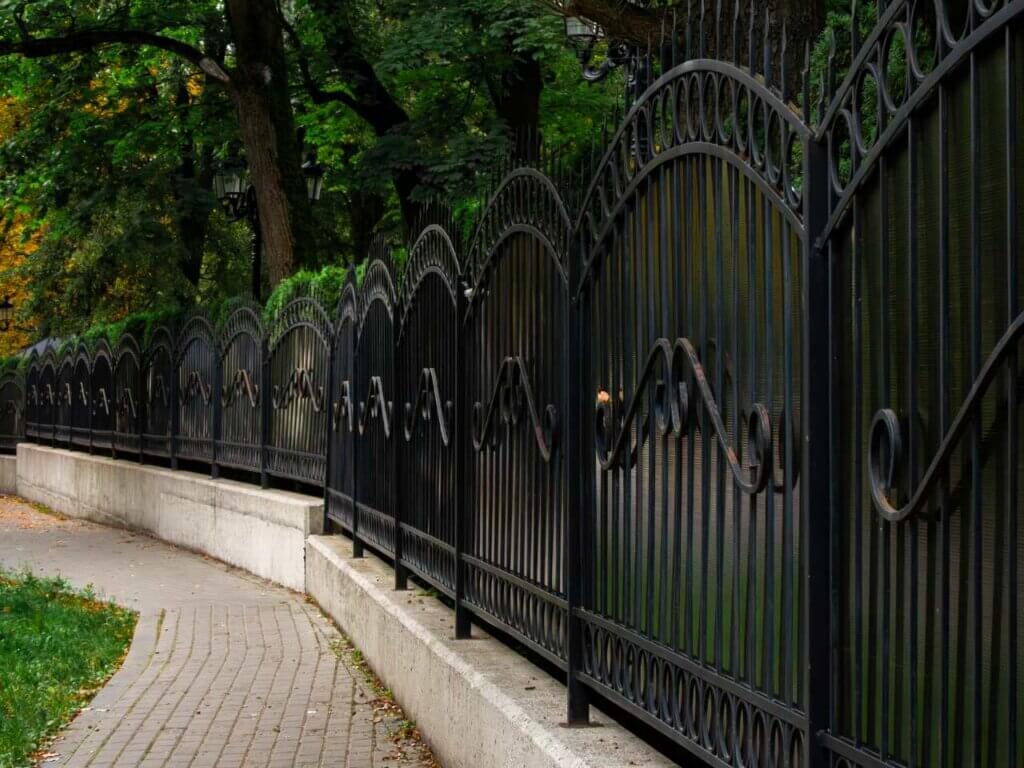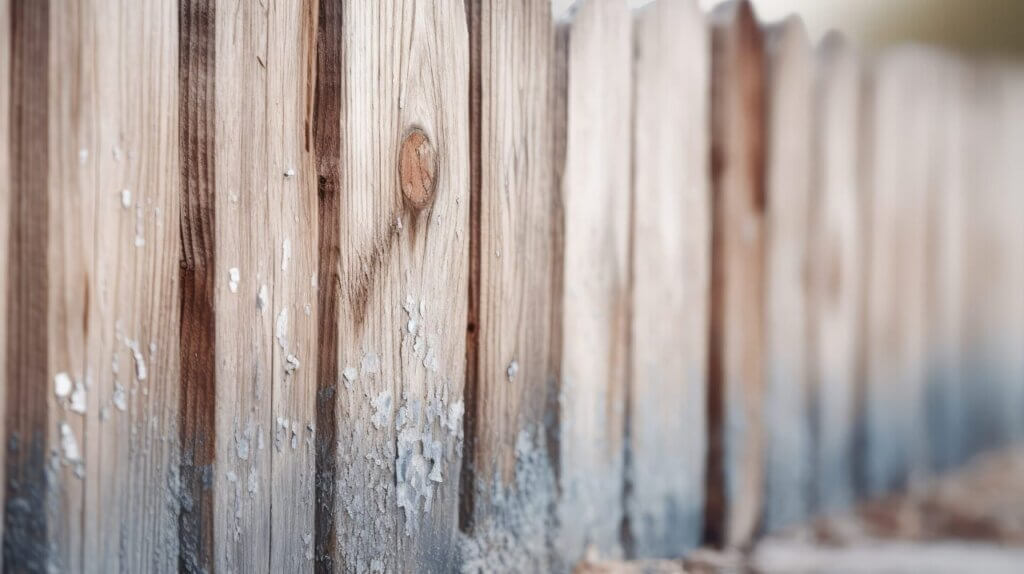5 Composite Decking Lighting Ideas
Our composite decking looks great in any setting, but you can really make your outdoor spaces shine with our decking
Products in Stock
Lowest Prices
Express Delivery
10-Year Warranty
Early April Sale. Up To 15% Off.

Choosing the right fencing material can transform your property’s appearance, security, and value. If you’re weighing up options between traditional timber and robust metal solutions, you’re facing one of the most common dilemmas in garden design. Both materials offer distinct advantages that might suit your particular needs—but how do you decide which is truly better for your specific situation? This guide breaks down everything you need to know about wood vs metal fencing to help you make an informed decision.
At first glance, the differences between wood and metal fencing seem obvious—one is natural, while the other is manufactured. However, the distinctions run much deeper than mere appearances. Wood fencing offers warmth and traditional charm that many homeowners find appealing, while metal fencing provides superior durability and often requires less upkeep over time.
The core differences extend to installation methods, lifespan expectations, and how each material weathers in various climates. When you’re considering your options, thinking about these fundamental distinctions will help guide your decision-making process.
Wood fencing brings natural beauty and versatility to any property. You’ll find it incredibly adaptable to various styles and designs, from classic picket fences to privacy panels and decorative lattice tops. The material blends seamlessly with natural surroundings, creating a harmonious look that enhances gardens and landscapes.
The affordability of wood is another significant advantage, especially for larger properties where fencing costs can quickly add up. Installation is relatively straightforward, making it possible for experienced DIY enthusiasts to tackle the project themselves. Many homeowners appreciate the ease with which wood can be painted or stained, allowing for personalisation that matches your property’s aesthetic.
Despite its appeal, wood fencing comes with notable drawbacks. The material is inherently vulnerable to moisture damage, which can lead to rot, warping, and splitting—particularly in the damp UK climate. Regular maintenance becomes necessary to protect your investment, including periodic treatments with preservatives and fresh coats of paint or stain.
Wood fences also face threats from insects like termites and woodworms that can compromise structural integrity over time. The natural ageing process means even well-maintained wooden fences typically need replacement sooner than their metal counterparts. If you’re looking for a low-maintenance fence for your garden, wooden options might not be ideal without consistent care.
Metal fencing stands out primarily for its exceptional durability and strength. When properly installed, these fences withstand harsh weather conditions and resist damage that would typically affect wood. The longevity of metal fencing often translates to decades of service with minimal intervention.
Security represents another compelling reason to choose metal. The material provides superior protection against intruders and is much more difficult to breach than wooden alternatives. Modern metal fencing comes in various styles—from ornate wrought iron to sleek aluminium designs—offering aesthetic options that complement contemporary architecture beautifully.
Many metal fences require virtually no maintenance beyond occasional cleaning, making them ideal for busy homeowners who want reliability without regular upkeep. The environmental impact can also be less significant, as many metal fencing products contain recycled materials and can themselves be recycled at the end of their lifespan.
The primary downside to metal fencing is the higher initial investment. Quality metal fences typically cost more to purchase and install than comparable wooden options. Some types of metal fencing, particularly iron, remain susceptible to rust and corrosion without proper protective coatings—an important consideration in Britain’s rainy climate.
Installation complexity presents another challenge, often requiring professional expertise and specialised tools that increase overall project costs. Metal fencing can also feel cold and industrial in some settings, potentially clashing with more traditional or rustic property styles. The range of design options, while expanding, still offers less versatility than wood for certain aesthetic preferences.
The expected lifespan of your fencing material significantly impacts its long-term value. Wooden fences typically last between 10-15 years with proper maintenance, while quality metal fencing can remain functional for 30+ years. The considerable difference in longevity makes metal an attractive option if you’re planning for the long term.
Maintenance requirements vary dramatically between these materials. Wood demands regular attention—inspection for damage, treating against rot and insects, and repainting or restaining every 2-3 years. If you’re considering alternatives with lower maintenance needs, you might want to explore our vinyl and composite fence comparison for additional options.
Metal fencing generally requires only periodic cleaning and occasional touch-ups for any scratches or damage to protective coatings. This reduced maintenance schedule appeals to many homeowners seeking hassle-free solutions.
Environmental resistance factors heavily into fence performance. Wood struggles against moisture, UV damage, and biological threats. Metal, while more resilient overall, faces its own challenges with certain types being vulnerable to corrosion in coastal areas or industrial environments with high pollution levels.
Security considerations often tip the scales toward metal fencing. The material provides superior resistance to physical force and proves far more difficult to climb or breach than wooden alternatives. For properties where security is paramount, metal fencing offers clear advantages.

The upfront investment differs significantly between materials. Wood fencing typically costs between £20-50 per metre for materials, with installation adding approximately £25-40 per metre depending on complexity. Metal fencing costs range from £50-120+ per metre for materials, with installation costs ranging from £30-60 per metre due to the specialised skills required.
Looking beyond initial expenses reveals a different picture. Wooden fences incur ongoing costs for preservatives, paint, replacement boards, and eventually complete renewal. These maintenance expenses can add up to substantial amounts over a decade of ownership.
Metal fencing maintenance costs remain relatively minimal, usually involving basic cleaning supplies and occasional rust treatment products. The reduced frequency of these interventions contributes to lower lifetime expenses despite higher initial outlay.
Value assessment must consider both short and long-term perspectives. While wood offers better immediate affordability, metal often provides superior value over extended periods due to its longevity and reduced maintenance requirements. Your time horizon for property ownership should influence which option represents better value for your specific situation.
Wood fencing makes perfect sense when you’re working with budget constraints but still want an attractive barrier. It’s particularly well-suited to traditional property styles and settings where natural materials enhance the overall aesthetic. Short-term property plans or temporary fencing needs also align well with wooden solutions.
Metal fencing becomes the superior choice when durability and security take priority. If you’re planning to stay in your property long-term, the investment pays dividends through extended lifespan and minimal maintenance. Contemporary architectural styles often pair beautifully with the clean lines of modern metal fencing designs.
The choice between wood and metal fencing ultimately depends on your specific priorities—budget, aesthetics, maintenance willingness, and security needs all play crucial roles in determining the ideal solution. By weighing these factors against the detailed comparisons we’ve provided, you’ll be well-equipped to select fencing that serves your property perfectly for years to come.
Remember that hybrid options exist too, combining elements of different materials to achieve optimal performance. Whichever direction you choose, quality installation remains essential to maximising the benefits of your selected fencing material.

Our sample pack contains a sample piece of each colour currently available. Order your free sample pack today to compare the colours and get a true feeling of the Dino Decking range!
Our composite decking looks great in any setting, but you can really make your outdoor spaces shine with our decking
If the idea of having rats under your decking makes you shiver, don’t worry. We’ll let you know the signs
Business hours
Monday: 09:00 – 17:30
Tuesday: 09:00 – 17:30
Wednesday: 09:00 – 17:30
Thursday: 09:00 – 17:30
Friday: 09:00 – 17:30
Saturday: Closed
Sunday: Closed
Contact us
01942 355968
support@dino.co.uk
Collection Address: Unit 1 Wetheral Close Hindley Ind Estate Wigan Greater Manchester North West WN2 4HS
Pages
Products
Testing
Copyright 2025 Dino Decking Ltd All Rights Reserved.
VAT Number: GB296097848.
Company Number: 10837233.